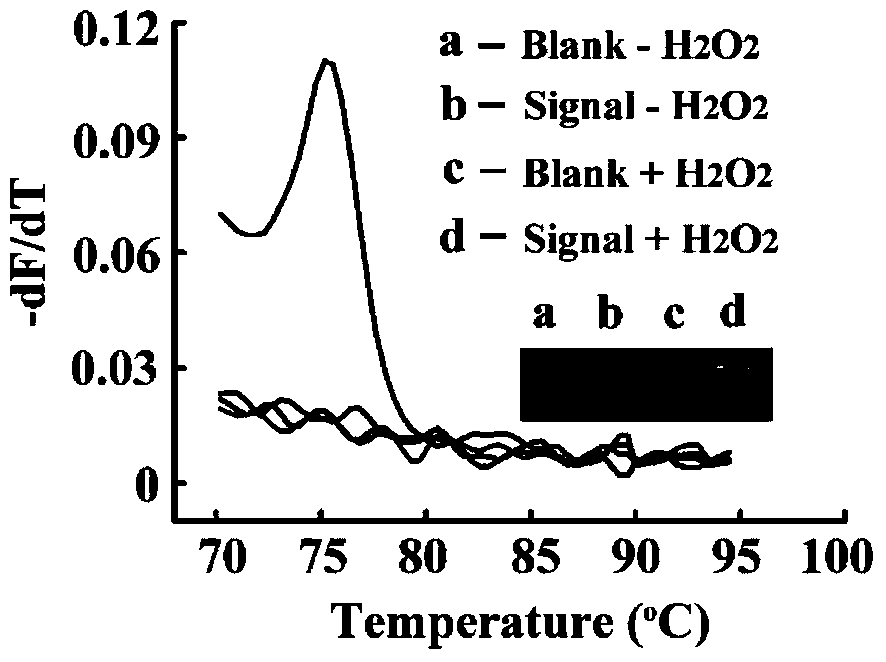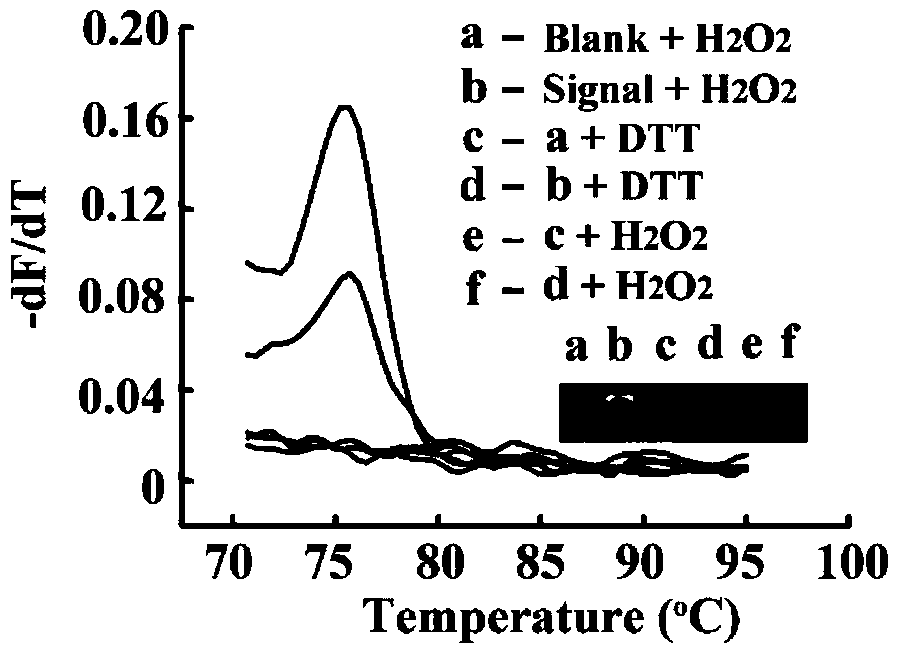Method for eliminating dtt interference when hydrogen peroxide eliminates nucleic acid constant temperature amplification and detects mercury ions
A constant temperature amplification detection, hydrogen peroxide technology, applied in biochemical equipment and methods, microbial determination/inspection, etc., can solve the problem of low detection sensitivity of trace mercury ions, reduced effect of mercury ions and thymine, affecting nucleic acid problems such as the application of constant temperature amplification methods to achieve the effect of high experimental cost
- Summary
- Abstract
- Description
- Claims
- Application Information
AI Technical Summary
Problems solved by technology
Method used
Image
Examples
Embodiment 1
[0027] The method that hydrogen peroxide eliminates DTT interference when nucleic acid isothermal amplification detects mercury ions comprises the following steps:
[0028] (1) Mix the recognition sequences containing mismatched sites and primers and templates that trigger constant temperature amplification of nucleic acids at a concentration of 100nM in equal volumes. After the recognition sequences combine with mercury ions in the mercury-containing solution to be tested, they can form a polymerase-recognizable sequence. stable hybrid structure;
[0029] (2) Mix and react the stable hybrid structure after binding mercury ions with hydrogen peroxide solution, amplification substrate, DNA polymerase KF, SYBR Green I, and amplification reaction buffer at a reaction temperature of 37°C for 15 minutes; The concentration of each component in the mixture is: primer concentration 100nM, template concentration 100nM, hydrogen peroxide concentration 0.01%, amplification substrate 40μM...
Embodiment 2
[0040] The remaining steps are the same in this embodiment, the difference is that the concentration of hydrogen peroxide in the mixture described in step (2) is 0.5%.
[0041] The detection results showed that compared with the reaction system without adding hydrogen peroxide, the fluorescence signal was enhanced by nearly 5 times.
Embodiment 3
[0043] The remaining steps are the same in this embodiment, the difference is that the concentration of hydrogen peroxide in the mixture described in step (2) is 0.2%.
[0044] The detection results showed that compared with the reaction system without adding hydrogen peroxide, the fluorescence signal was enhanced by nearly 6 times.
PUM
 Login to View More
Login to View More Abstract
Description
Claims
Application Information
 Login to View More
Login to View More - R&D
- Intellectual Property
- Life Sciences
- Materials
- Tech Scout
- Unparalleled Data Quality
- Higher Quality Content
- 60% Fewer Hallucinations
Browse by: Latest US Patents, China's latest patents, Technical Efficacy Thesaurus, Application Domain, Technology Topic, Popular Technical Reports.
© 2025 PatSnap. All rights reserved.Legal|Privacy policy|Modern Slavery Act Transparency Statement|Sitemap|About US| Contact US: help@patsnap.com



